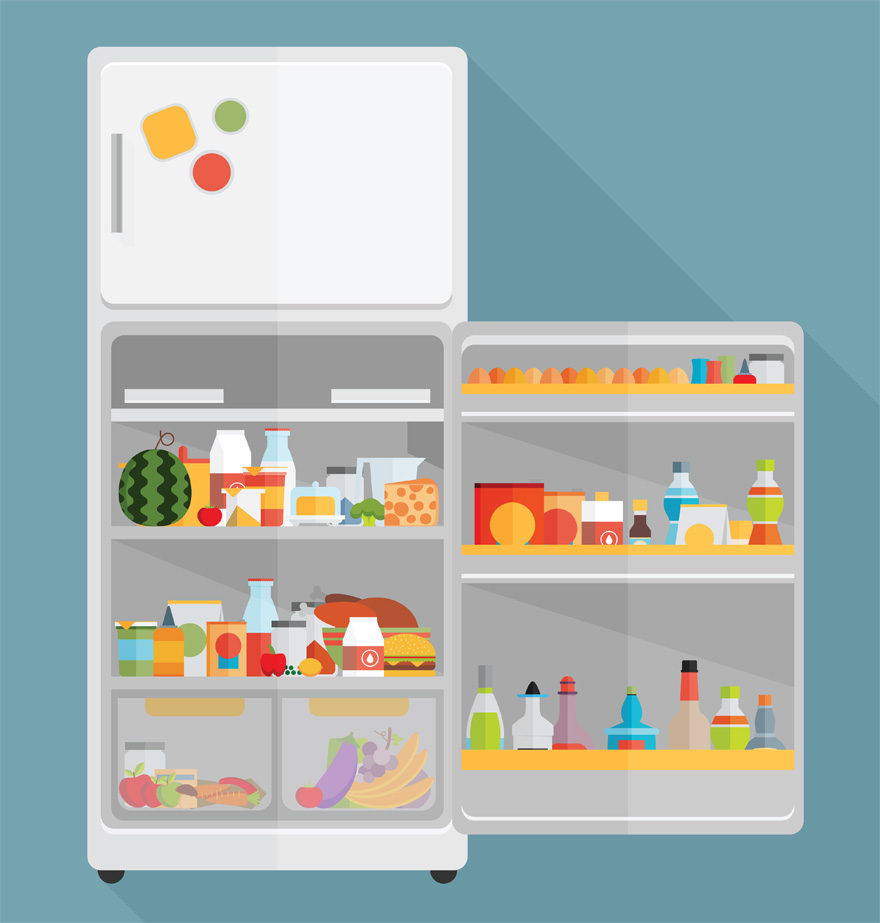Yes, there is a right (and a wrong) way to organize your fridge. And the wrong way might make you sick. Modern day refrigerators can do amazing things, but they can’t always keep a consistent temperature and they can’t prevent spills and drips. To get your fridge in working order, take a page from the pros. Restaurant fridges are organized by a food’s cooking temperature: foods that can be eaten raw on top and so on. Of course, with a few caveats. Here’s a quick guide to organizing your fridge. [pagebreak]
Shelves
So you have all those shelves in your fridge, usually four and then a few drawers. On the upper shelves, keep ready-to-eat foods. This includes leftovers (in clear Tupperware and / or labeled).
In the lower shelves, keep raw ingredients that will be used in cooking. Stock your middle shelf (where the temperature is most consistent) with eggs and the lowest shelf with raw meats or fish, being careful to place them in a plastic bin or bag to safeguard against any drips. (But if they do drip, since they’re on the last shelf, they won’t contaminate any foods.)
Also on the last shelf, save safe for that carton of milk, yogurt, and deli meats. We know, you put it on the top. But the bottom shelf is coldest and will help make your milk and cold cuts last. [pagebreak]
Drawers
So drawers, though they’re designed for fruits and veggies, are usually the lowest part of the fridge. There are a few things you can do: use one for veggies and one for meat or place our meat in a plastic bin on the shelf above.
Veggies do best with a bit of moisture, which is why they do best in the drawer. Keep them in their original packaging or a loose bag and don’t wash them until you need them. Same for fruit, which should go in the crisper. [pagebreak]
The Door
The door is not a catchall for the 17 bottles of soy sauce you seem to have accumulated. Here’s what to line those shelves with. Start with butter and soft cheeses; they don’t need to be cold so they can go on the warmest part of the fridge.
And since condiments are usually high in preservatives like vinegar and salt, they can go on the door. We’re talking ketchup, salad dressing, pickles, etc. You can also stash nut oils here (olive and veggie oils can go in the pantry).


![Making Mealtime Matter with La Familia: Easy Sofrito [Video]](https://thelatinkitchen.com/wp-content/uploads/2015/10/sofrito-shutterstock__0-500x383.jpg)
![Easy Latin Smoothies: Goji Berry Smoothie [Video]](https://thelatinkitchen.com/wp-content/uploads/2015/12/goji_berry-shutterstock_-500x383.jpg)
















![Fun and Fast Recipes: Fiesta Cabbage Salad [Video]](https://thelatinkitchen.com/wp-content/uploads/2015/11/fiesta_cabbage_slaw-shutterstock_-500x383.jpg)









